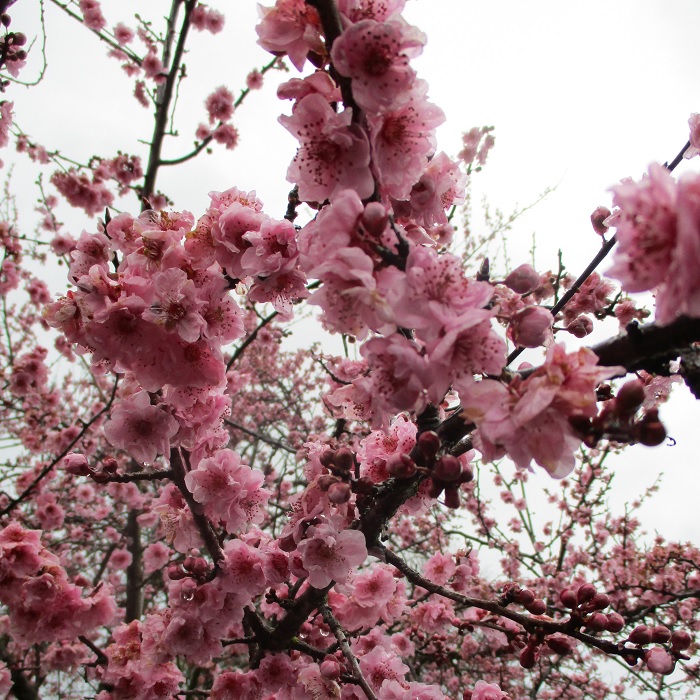UNITED STATES—Cherry blossoms are such an excellent tradition in Washington D.C., as well as in Japanese neighborhoods of the West Coast. ‘Kwanzan’ and ‘Akebono’ flowering cherries in Japantown of San Jose are glorious when they bloom early in spring. They are less common, but just as spectacular in Los Angeles. More varieties grow in the cooler climates of Sacramento, Portland and Seattle.
Yet, after all the work the trees put into bloom, they produce no fruit. These prettiest of the cherry blossoms are sterile. They are known as ‘flowering’ cherries, which is a polite way of saying that they are ‘fruitless.’ Cherry trees that produce fruit are very similar and bloom about as profusely, but do so with somewhat more subdued utilitarian flowers. After all, they have to work for a living.
Many of the deciduous fruit trees have ‘flowering’ counterparts that are grown for their showy flowers. Purple leaf plums, which are really flowering plums that happen to have purplish or bronze foliage, are the most popular because the foliage is so colorful after bloom. Flowering nectarines and flowering peaches are rare, but not as rare as flowering apricots and flowering almonds are.
Flowering crabapples are the counterparts to the entire fruiting apple group. They are not really sterile, so produce tiny fruits that mostly get eaten by birds. Flowering pears, which are commonly known as ‘ornamental’ pears, are grown more for their impressive autumn foliar color than for their potentially modest bloom. They also produce tiny fruits. The evergreen pear lacks autumn color. Flowering quince is an odd one. It is not even the same genus as fruiting quince.
Fruit trees bloom too. They may not be as colorful, but their simpler and paler blossoms are about as profuse as those of their flowering counterparts. Their stems are usually straighter and more vigorous because they are pruned for fruit production instead of allowed to develop naturally. A few stems can be left unpruned to be cut and brought in as cut flowers when they eventually bloom.
Whether flowering or fruiting, almonds and plums should bloom before pears and apples. There is no guarantee though. Weather can delay early bloomers, or accelerate late bloomers. Earlier frost promoted healthy bloom, but the subsequent abundance of rain is unfortunately ruining flowers that are blooming now. For fruiting trees, this means that much or all of the fruit will be ruined.
Highlight: purple leaf plum
Of all the fruitless fruit trees, the purple leaf plum is the most popular here, but probably not for the obvious allure of its rich purplish or bronze foliage that maintains color until it falls in autumn. Purple leaf plum is simply so easy to grow. It does not need to be pruned as regularly as flowering peaches or flowering crabapples do. It is not as sensitive to sunscald as flowering cherries are.
Most purple leaf plums bloom with double or single pink flowers. Old varieties that bloom white are uncommon. Mature trees might get taller than a two story house, with nicely rounded canopies. Trees are usually pruned up onto single straight trunks, although mature trees in older landscapes might have a few sculptural trunks. Purple leaf plum want full sun and occasional watering.







